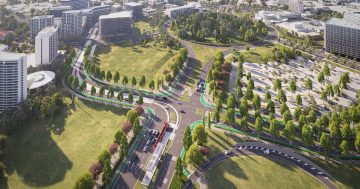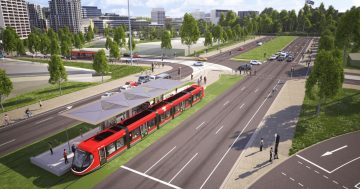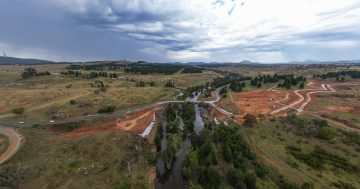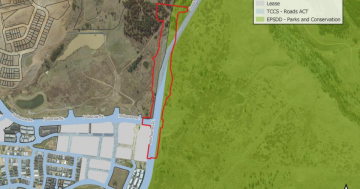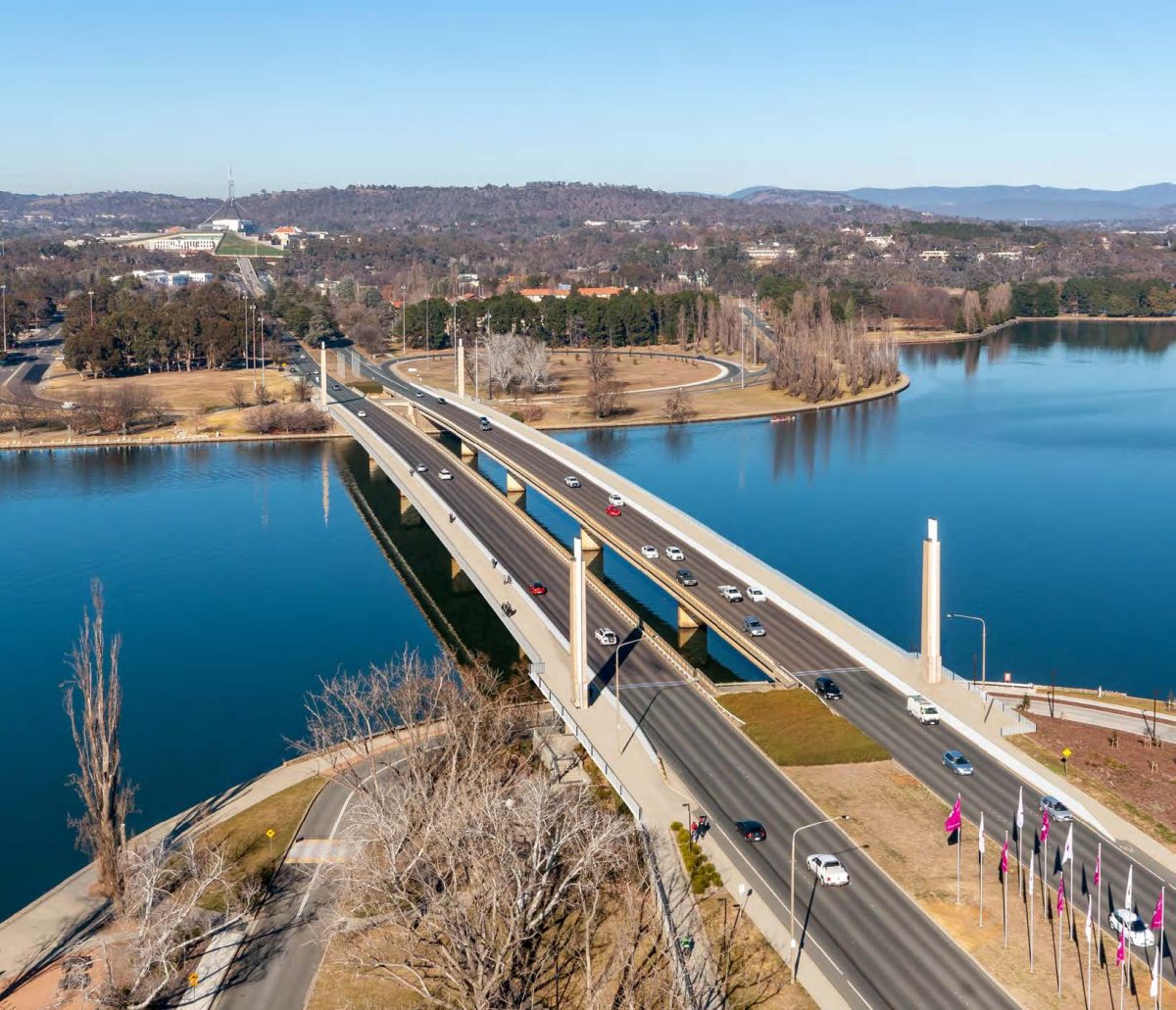
An artist’s impression of the upgraded bridge, which will double the width of the paths to 5 metres. Image: NCA.
A parliamentary committee has recommended the approval of the $137.5 million Commonwealth Avenue Bridge upgrade, but concerns remain about whether the upgraded bridge will be fit for Canberra’s growing population and the upcoming light rail extension.
The National Capital Authority (NCA) has sought approval from the Federal Joint Public Works Committee for a proposed project to strengthen and widen the two bridges, upgrade the shared path approach ramps, replace the traffic and shared path safety barriers, and upgrade the lighting.
The project will double the width of the paths to 5 metres and increase the bridge’s load-bearing capacity to include vehicles up to 42.3 tonnes.
The NCA says the project is intended to “ensure that the bridge can meet its current and future road user needs, provide better safety for users across the bridge and improve shared path amenity and connectivity”.
However, in a report presented to the House of Representatives on Tuesday (17 October), the committee expressed its concerns that the upgrades would not be enough to support future road user needs as the capital continues to expand.
“The committee recognises the need to strengthen the bridge to accommodate Canberra’s growing population and the increased use of electric vehicles in the Australian Capital Territory; however, is concerned that the level of strengthening may not sufficiently future-proof the bridge,” the report said.
Although the committee was satisfied the project has merit in terms of its need, scope and cost, it questioned the NCA’s decision to upgrade the existing Commonwealth Avenue Bridge rather than demolish it and construct a new one.
The report pointed out that the NCA narrowed eight options down to three: do nothing; strengthen and widen the existing bridge; or demolish the current bridge and construct a new bridge capable of carrying six lanes of vehicle traffic and light rail.
The NCA recommended option two as the preferred option as it sufficiently meets the project objectives and user requirements, reduces the risk to the NCA and Australian Government and represents the greatest value for money outcome.
The NCA discounted the option to build a new bridge due to the “more immediate need to strengthen the bridge to avoid failure of the existing structure”.
Early engineering studies for the Commonwealth Avenue Bridge upgrade found that it was not possible to strengthen the existing bridge to accommodate both traffic and light rail, the report noted.
“At the moment, the most viable proposal for light rail is to construct a third bridge in the space between the northbound and southbound bridges, including a safety walkway on either side of where the rail carriages run.”
The committee pointed out the NCA’s decision to strengthen the existing bridge rather than replace it with a more costly new structure that can support light rail, but expressed concerns about carrying this out.
“The Committee acknowledges the level of uncertainty around extensions to the light rail; however, remains concerned that the three-bridge proposal may prove impractical or impossible given the complexity of the design.
“For these reasons, it may be that the bridge will still require demolition and replacement in the future, rendering this expenditure redundant.”
The NCA considered whether it would be preferable in terms of buildability and reducing congestion to carry out the Commonwealth Avenue Bridge upgrade and the construction of light rail at the same time, but ultimately, the strengthening of the bridge was found to be more urgent.
“Although the timing of the light rail has not yet been finalised, it is likely to be beyond 2030,” the report said.
“The engineering advice received by the NCA suggested that the strengthening work needed to be undertaken within a shorter timeframe to avoid reaching failure of the existing bridge.”
Concerns were previously raised during public hearings about the NCA’s lack of consultation with local elected representatives over the project.
“I’m disappointed that there haven’t been efforts to engage with the actual representatives for this area where the bridge is in the middle,” Bean MP David Smith told the committee in August.
In light of this, the committee recommended that the NCA contact local and federal MPs in the ACT who may be affected by the works to offer a project briefing and report on its progress.
It also recommended that the NCA report back at six monthly intervals on the project’s progress, including further developments regarding light rail that may have an impact on the long-term use of the bridge.
















